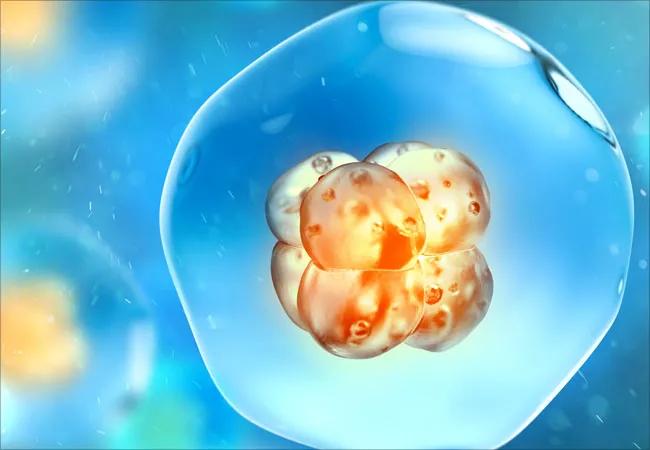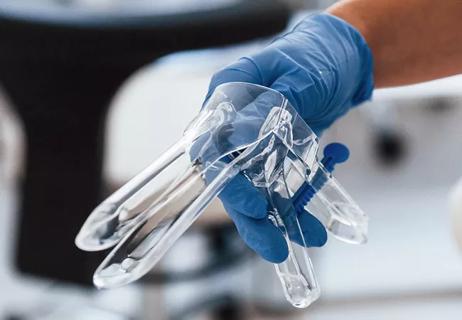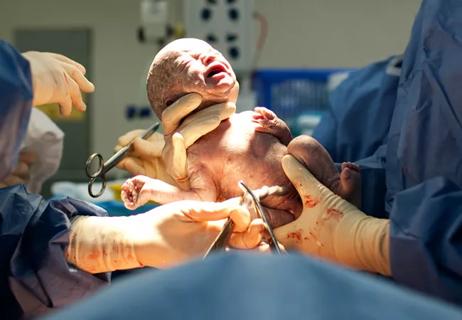Advertisement
Results of retrospective analysis presented at ASRM 2018

Cleveland Clinic conducted a retrospective analysis of blastocyst vitrification cycle outcomes to determine how important preimplantation genetic screening (PGS) is to achieving high implantation rates.
Advertisement
Cleveland Clinic is a non-profit academic medical center. Advertising on our site helps support our mission. We do not endorse non-Cleveland Clinic products or services. Policy
“The use of PGS has not been consistent clinic to clinic, with on-site genetics labs tending to be more committed to PGS for all patients,” notes Nina Desai, PhD, HCLD, Fertility Ob/Gyn & Women’s Health Institute and author of the study. Other considerations for integration of PGS into the routine IVF treatment regimen may include lab staffing, technical skills of embryologists, physician views and patient acceptance of PGS.
“Our objective was to determine if PGS for all patients offers an advantage, given the significant cost of screening,” Dr. Desai says. “Our study examined cryopreservation outcomes after transfer of PGS-tested versus unscreened blastocysts in an IVG program where less than 30 percent of patients undergo PGS.”
The study looked at outcomes from 1,042 vitrified-warmed blastocysts. No exclusion criteria were applied. All blastocysts were derived from culture of normal fertilized oocytes in the EmryoScope® time-lapse incubation chamber with 6 percent CO2 O2. Blastocysts of good quality with ICMs were cryopreserved. For PGS screening, laser trophectoderm biopsy was performed. Biopsied cells were frozen and sent out for chromosome analysis using the Next Generation Sequencing technique. Blastocysts were cryopreserved using a two-step ethylene glycol/DMSO vitrification protocol: 7.5 percent for five minutes, then 15 percent for one minute before loading on the Rapid-i carrier and immersion in liquid nitrogen. Patients were prepared for frozen embryo transfer using endometrial priming with estrogen and progesterone. Outcome data was stratified by age at freeze and whether blastocysts underwent PGS screening.
When comparing cryopreservation outcomes between patients transferring blastocysts after PGS screening, versus untested blastocysts, this study confirmed higher implantation rates using PGS only for women 39 and older.
A program culturing to blastocyst can still get high implantation and pregnancy rates with selective use of PGS.
“From this initial data, it appears that implanting embryos shared similar growth characteristics among the three age groups,” says Dr. Desai. “Our study found culture to blastocyst programs that are not as aggressive in using PGS can still expect to achieve good outcomes, particularly in their younger patient population.” Significant increase in IR with PGS was only seen in women 39 and older.
“Under age 35, the multiple pregnancy rate really wasn’t much different,” adds Dr. Desai. “Yes, we were transferring slightly more embryos in that group, but the clinical pregnancy rates were identical. This supports our practice not to recommend PGS with patients under age 35.”
Dr. Desai advises PGS be discussed as an option with the age 35 to 38 group. “The pregnancy rates were not that different, but the implantation rates were 45 percent versus 55 percent with PGS. So, although not statistically significant, there might be some advantage using PGS,” she says, acknowledging PGS also encourages transfer of a single embryo, thus keeping multiple pregnancy rates down.
Advertisement
“When you look at the data for age 39 and above, it’s absolutely clear that if you don’t do PGS, your pregnancy rates are lower,” Dr. Desai advises. “Here, PGS is much more important. The implantation rate of a single PGS embryo diagnosed as euploid was 58 percent, compared to only 32 percent if an untested embryo was transferred.”

Significant increase in IR with PGS was only seen in women ≥ 39. With culture to blastocyst programs not as aggressive in using PGS can still expect to achieve high implantation rates in their younger patient population.
Consulting on the project were Jeffrey M. Goldberg, MD, Cynthia Austin, MD, and Tommaso Falcone, MD, staff physicians at Cleveland Clinic’s Ob/Gyn & Women’s Health Institute.
Advertisement
Advertisement

Researchers examine waste and implore colleagues to take action

Adjusting practices and spreading knowledge will help reduce greenhouse gas emissions

Instruments still present a barrier as more women join the field

Optimizing the environment can measurably reduce physical strain

On the importance of monitoring a woman’s reproductive aging process

Postgraduate training is a top priority for the Ob/Gyn & Women’s Health Institute

What’s next for maternal-fetal medicine?

A conversation with Giancarlo Mari, MD